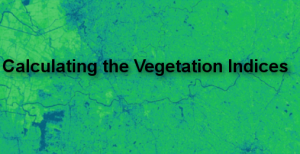To get a deeper understanding of the environment, different methodologies are used. Ecology has proved to be the best method of studying the environment and examining all its components. In Ecology, various methods and tools are used to achieve its goal. The remote sensing technique has been in the front line to ensure the ecology field can meet its goal. This technique is used to carry out various tasks within the ecology field. In this article, we shall discuss some of the most common remote sensing applications in the ecology field.
1. Mapping Distribution of Forest
Remote sensors produce images with a wider view of the earth’s surface. These images may be sued to show forested areas and the regions around those areas. These images are greatly used in forest ecology and management plans. Also, researchers depend on remote sensors data to estimate the biophysical and biochemical properties of the trees found in the forest.
2. Land use information
In ecology, researchers try to understand the relationship between living organisms and their physical involvement. To achieve this, they have to examine the land cover and its use. There are ‘thousands’ ways to do this, but one of the most convenient and reliable methods is remote sensors. Remote sensors produce imagery essential in analyzing how the land is used. The imagery also shows a clear view of the land surface.
3. Vegetation chemistry and moisture
When researching the vegetation and plants’ moisture, various tools are used. Multispectral fine spatial resolution and coarse spatial resolution tools, which are remote sensor tools, work magic when examining vegetation chemistry and moisture. Botanists rely on this sensor as their main source of data.
4. Examining biodiversity of an area
Biodiversity makes up the ecosystem of an area. To study biodiversity, one needs advanced tools. Remote sensors have proved to be powerful in this field. Remote sensors have high magnifying power, and thus they can be used to study the relationship between microorganisms and human beings.
5. Vegetation structure
In the study of leaf area index, standing biomass, and canopy height, scientists rely on airborne tools. These tools give a clear view of the vegetation used for analysis purposes. These variables (leaf area index, standing biomass, and canopy height) are subjected to remote sensor techniques such as Multispectral fine spatial resolution and hyper spec systems. The images are then analyzed, and results are used to make comparisons.
6. Soil characteristic
Soil is the biggest component of the ecosystem. Therefore there’s a need to study and examine it. To do this, researchers use diverse techniques and tools. To cover a large area at the same time, remote sensors are used. They record earth information which is later used to categorize soil into different classes. Also, these sensors can be used to detect the effect of change of weather on the soil.
7. Mapping distribution of forest Ecosystem
In the study of ecology, forest and tree distribution play a vital role. To study and examine the distribution of forests, an airborne technique is highly advised. Remote sensors have a wide view of the earth’s surface and thus can be used to show the mapping distribution of forests.



